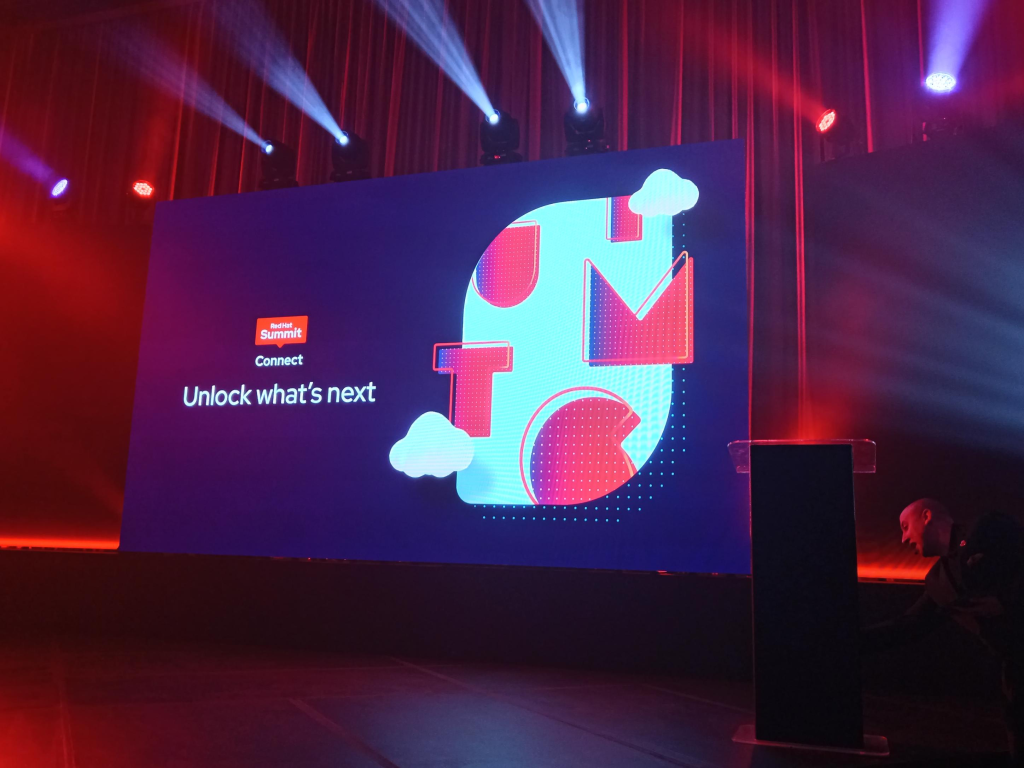
Within a global period of rapid tech advances, such as we are currently experiencing, the Red Hat Sumit this year unsurprisingly brought a focus on the latest tech wave consuming corporate and investor attention – Artificial Intelligence.
Dion Harvey, Regional General Manager for Red Hat SSA, put this into perspective in his opening address saying “This is just a crazy timeline, and at the centre of this arms race I think are two technologies, two foundational technologies that are really set in my opinion to change the shape of this planet forever. That’s AI and quantum computing”.
Setting The AI development Scene
Harvey set the current scene pointing to the high level of hype around AI. “The hype in fact is pretty much as high as some of the stock prices of some of these companies”, comments Harvey.
“I know we’re in an industry of waves but this one just feels like it’s something else. I’m an African and I’m an absolute believer in the potential and the vast opportunity that exists in this awesome country that we live in, but when I look at this hype it kind of makes me ask myself where does the hype meet the reality?
The Red Hat strategy, according to Harvey is defined by the concept of the open hybrid cloud and building resilient, powerful platforms that are focussed on things like building, running, managing and automating environments. The whole philosophy for the software group is about producing software and services that power innovation.
Having its entire structure built on an opensource platform and philosophy, the company holds that an important part of the open source mindset is the sharing and exchange of ideas backwards and forwards. “It’s the whole principle of the open source movement” says Harvey.
Eco-System Approach Paying Dividends
In terms of a complete eco-system approach they have harnessed the power of global strategic alliances, local partnerships, hyper-scalers, implementers, as well as complementing technology vendors. And this is the ecosystem which is a key element in the success and the strength of this global software and tech group.
Senior Director for Red Hat’s Global Portfolio Strategy Brian Graceley, spoke about the “ten-year tech industry transition wave, that started with Mainframe developments in the 1960’s, to the PC era, Networking era, desktop era, then mobile tech era followed by Cloud starting off around 2015 and now the AI era kicking off in 2022.
“If you’ve been paying attention at all, you know that we’re at the very beginning of one of those transitions” says Graceley. “We’re sort of in the middle of the cloud era and we’re at the beginning of the AI era” asserts Graceley.
Graceley points out that for those who have lived through those transitions, it means a number of things:
Number one, it’s very exciting, and If you’re a technologist, there’s so much to explore “There are so many new technologies, new protocols, new products that are out there. You get a chance to play with things” comments Graceley. “You get a chance to explore ideas that you never really thought about” he says.
Secondly is the reality that along with the changes comes confusion and uncertainty.
Questions of what’s this going to mean for people’s jobs? Are we going to do things the right way? And more.
These are important considerations for companies and individuals to take seriously as every time the industry goes through a transition, making the right choices, and setting the correct priorities and where to start the process are critical success factors.
Graceley talks about “How do we think about things long term, but at the same time, how do we make sure the things that run the business today, that may be profitable today continue to be very, very efficient?”
Key Lessons from the last 10-Years
The presentation by Graceley highlighted that it is important for companies and tech groups to look back at what has been learned from this “cloud Computing era”
- The first thing learned is that location is really important. It’s key to make sure that no matter where you want to run your services, whether it’s in your private clouds or your private data centres, whether it’s in the public cloud across multiple environments, they run efficiently and securely
- The second lesson learned is that consistency across those locations is so important. Whether it’s consistency of how to automate, how to deploy, how to effect security, the more consistent, the more efficient the system reducing cost and mistakes according to Grayson.
- The third key aspect is innovation that according to Grayson is going to come from all over the place. He points out that 10-years ago an AWS console, held five or six services whereas today it’s 200 plus services on offer.
- Finally, and maybe most importantly, according to Graceley, it’s about collaboration. And I think we’ve learned anything over the last decade or so for us is while all these technologies are amazing, we have to be able to collaborate across our development teams and our operations teams, and now across our finance team.
AI Investment – Doing More With Less
Graceley comments that “AI is going to start to take up some chunk of your budget. Okay, how do I start to do more with AI, but also continue to do things I want to do? You’re going to have things that are going to challenge you, like what are you doing with virtualisation that may become budget things”.
“How do we make sure that what we’re delivering to you can help you drive efficiency so that you can do more with less, you can automate more, you can make sure that the skills that you have and the people that you have should take advantage of all these new capabilities that are coming along” concluded Graceley.

